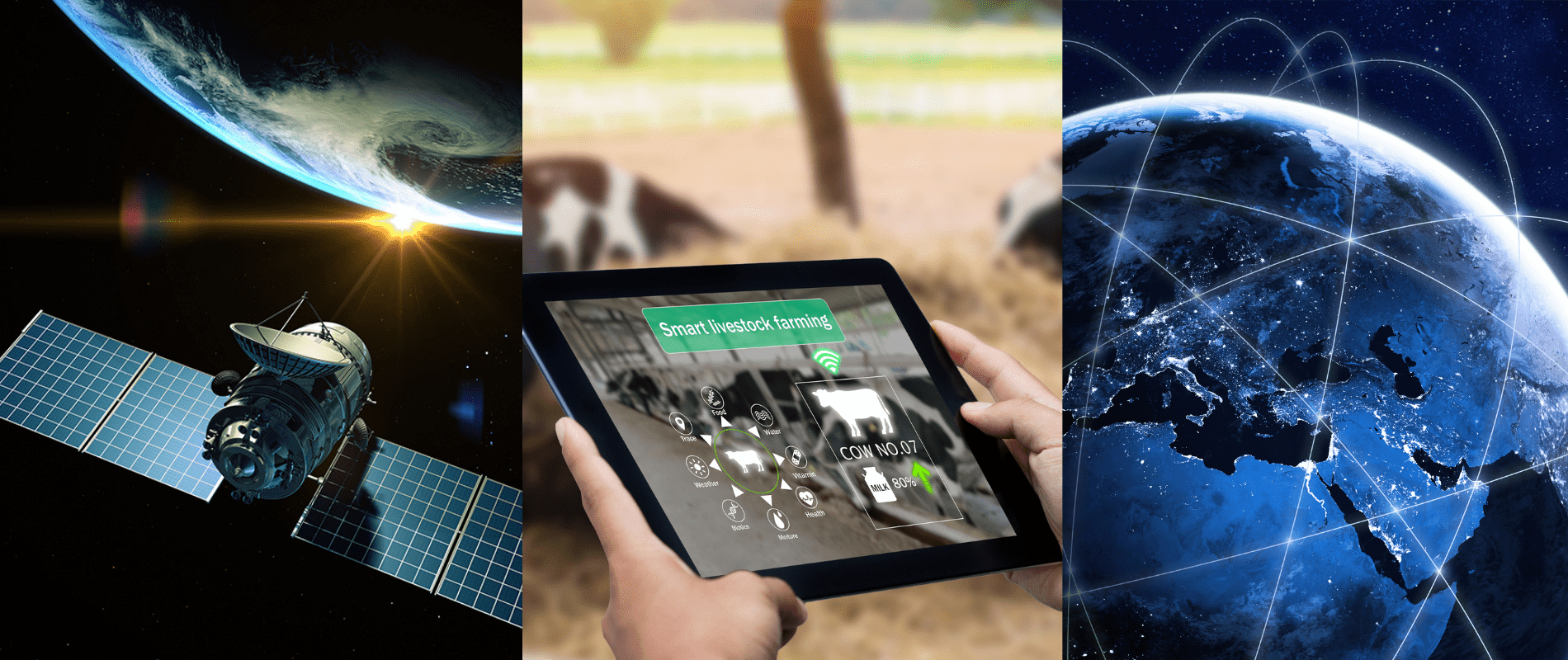Sarah Biggerstaff from the CEAT Marketing and Communications team sat down with Martin Amidy, Senior Research Fellow at CEAT to discuss the recently published report ‘Space-based technologies – opportunities for the rural sector’, its outcomes, and the role of space tech in the future of agriculture.
SB: What does space technology have to do with agriculture?
MA: Space technology globally is becoming increasingly accessible as hardware becomes cheaper, more satellites are launched and the applications are improved and expanded. While traditionally sectors like defence and mining have been testing grounds for frontier space technology, recent advances, namely in small scale satellites, have opened a wealth of opportunity for Australia’s rural industries.
Space technologies underpin many of everyday technologies found on Australian farms and fishing vessels – including GPS tracking, auto-steer machinery, paddock-level imagery and weather forecasts. While these technologies are well established, the recent growth in internet of things sensors and applications has expanded the range of solutions on the market, with the opportunities available for rural industries is only just being realised. The application of space technology has already translated to safer farms, more digitally enabled and connected rural businesses, improved environmental management, increased water efficiency and better input management. The opportunities are limitless.
But what else does it mean? As space technology evolves and offers new ways of doing business, producers are grappling with the scope and scale of opportunity. We are only now on the cusp of realising the extent to which these technologies can be pathways to increased productivity, or ways to solve producer pain points.
SB: What are the main outcomes or findings of the report?
MA: The large-scale nature of extensive livestock farming and broadacre cropping in Australia lends itself well to space-based remote sensing, as satellites can cover large areas relatively quickly. In contrast, more intensive farming systems – including horticulture and dairy – may continue to be better served by drones or in-field (i.e. smaller scale and higher resolution) technologies.
Earth and marine observing (including satellites, drones and sensors) had an estimated value to agriculture, fisheries and forestry in the Asia-Pacific region of $37 billion in 2019. Improvements to geolocation could benefit agriculture by $2.2 billion over a 30-year period. Satellite connectivity will assist in furthering the application of internet-enabled technologies, with connectivity technologies having the potential to add $15.6 billion to gross value of production in agriculture, fisheries and forestry industries each year.
Existing and emerging satellite and communications technologies have been used to efficiently monitor our vast swathes of ocean and to improve forecasting of events affecting the management of commercial fishing. So space tech has broad applications across forestry and fisheries, as well as agriculture.
SB: What does this mean for the future of Australian agriculture?
MA: To remain internationally competitive while meeting broad social, economic and environmental goals, Australia’s rural sector needs to ensure that it is making the best use of space-based technology. Reliable, robust and fast internet connectivity is vital so that the rural sector can access data, information and telecommunication services. This is a major barrier to the uptake of some space-based technologies as accurate GPS requires internet connectivity and remotely sensed data often needs to be accessible on-farm or in-field to support decision making. Emerging satellite connectivity technologies may also provide a solution to this challenge.
Just as producers require assistance to navigate the increasingly complex and crowded technology market, tech companies need assistance to navigate networks in the rural sector. Greater collaboration and coordination are required across the agricultural innovation ecosystem to maximise the value that these opportunities provide.
Space-based technologies are already being used in rural industries to create better value for producers, but many opportunities are being underutilised. The rural sector will need to keep across advances in the rapidly developing space sector if it hopes to remain internationally competitive.
The full report Space-based technologies – opportunities for the rural sector is available online for free.
